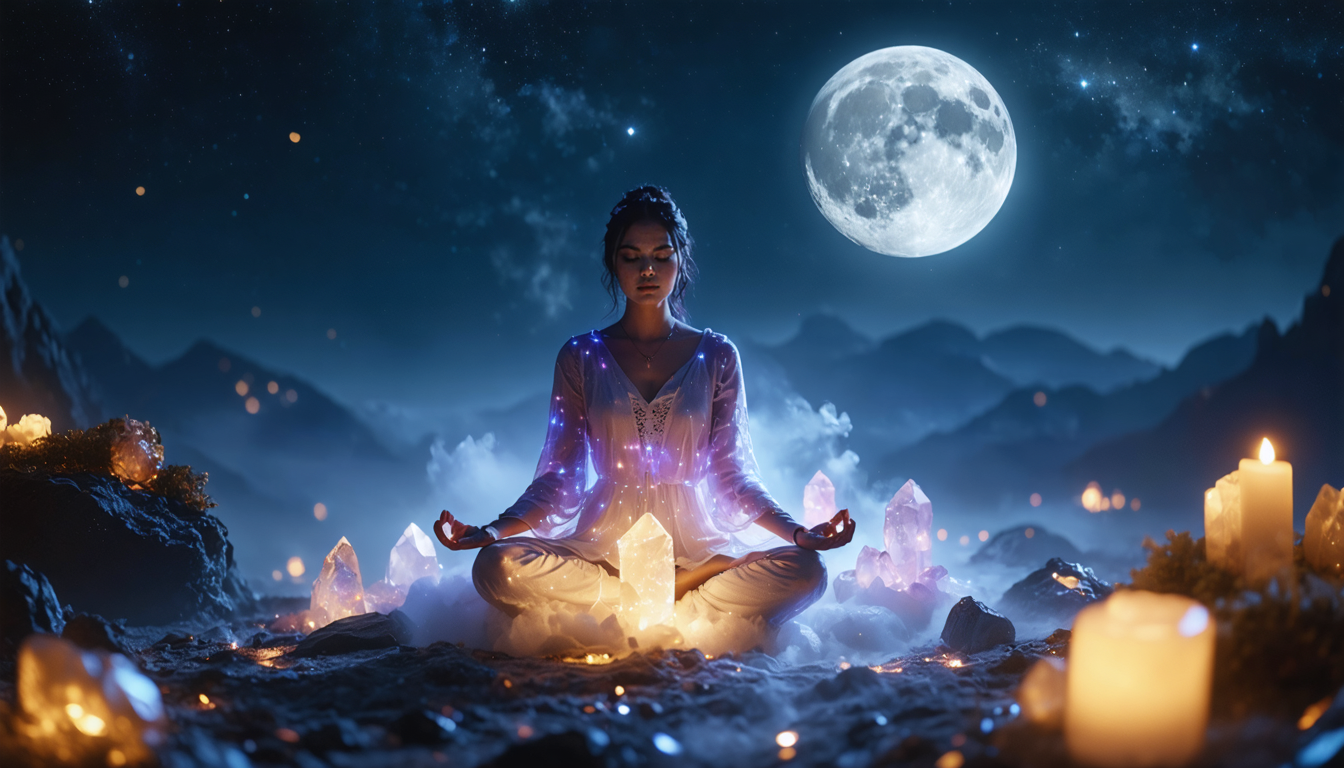For centuries, the moon has captivated humanity, influencing tides and sparking myths. But could it also affect our emotions? Emerging research and ancient traditions suggest a link between lunar phases and our inner states. This article delves into the potential impact of the moon on our emotional landscape, offering insights into how to navigate these celestial currents and enhance our well-being.
The Moon’s Dance A Cosmic Rhythm of Emotions
Throughout history, humanity has gazed at the moon, sensing a profound connection, a rhythm that seems to echo within our own bodies and spirits. This deep-seated intuition finds roots in ancient philosophies that viewed the human body as a ‘microcosm’, a miniature reflection of the ‘macrocosm’ of the universe. In this worldview, the celestial movements, particularly the moon’s phases, were believed to directly influence earthly life and the intricate workings of human physiology and psychology. The moon’s steady cycle was seen not just as a predictor of tides and seasons but as a cosmic clock governing internal rhythms.
One of the most commonly cited physical links between the moon and human biology relates to its gravitational pull. This force is famously responsible for the ocean tides, and given that the human body is composed largely of water, the idea that this same gravitational pull might exert a subtle influence on our internal fluids, perhaps affecting everything from blood pressure to cerebrospinal fluid, has been a persistent subject of speculation. While the tidal force on a body of water the size of the human brain is negligible compared to the forces within the body itself, the concept remains a compelling part of the narrative surrounding the moon’s potential physical impact.
Exploring potential scientific connections, some researchers have investigated whether lunar phases correlate with changes in mood, sleep patterns, or even hormonal fluctuations. The theory posits that if the moon affects natural cycles on Earth, it might also subtly influence our biological clocks or hormonal balance. For instance, studies have explored whether the full moon is associated with increased hospital admissions, changes in sleep duration, or altered melatonin production. However, it is crucial to note that the scientific literature on these correlations is highly contradictory and far from conclusive. Many studies find no significant link, while others report weak or inconsistent effects, often limited by sample size, methodology, or the challenge of isolating lunar effects from other environmental or social factors.
Despite the lack of definitive scientific proof, the belief in the moon’s power over emotions and mental states is deeply embedded in historical and cultural traditions across the globe. The very word “lunacy,” historically used to describe mental instability, derives directly from “luna,” the Latin word for moon, reflecting an age-old association between the moon’s cycle and erratic behaviour or emotional extremes. Anecdotal evidence, passed down through generations and observed in various cultural practices, frequently speaks to the moon’s influence, suggesting heightened energy, altered moods, or increased emotional sensitivity around certain phases, particularly the full moon.
Psychological perspectives also lend credence to the moon’s symbolic power. Notable figures like Carl Jung explored the moon as a potent archetype within the collective unconscious, representing the feminine, intuition, the unconscious mind, and the cyclical nature of life and emotions. Within this framework, the moon’s phases resonate with deep psychological patterns, mirroring our own internal ebb and flow of energy and emotional states. The waxing moon might symbolize growth and manifestation, while the waning moon represents release and introspection.
The full moon, in particular, is a focal point of both folklore and investigation. It is often associated with restlessness and disturbed sleep. While the exact mechanism remains debated and scientific findings are mixed, it is well-established that sleep quality and duration profoundly impact emotional regulation and mental well-being. If the full moon does, for whatever reason, subtly affect sleep patterns – perhaps through light levels, psychological expectation, or an as-yet-undiscovered mechanism – this could indirectly contribute to perceived changes in mood or behaviour. The human fascination with synchronizing our internal world with this powerful external rhythm persists, inviting us to observe and potentially navigate our own emotional landscapes in tune with the moon’s ancient dance. As we explore the specific phases that follow, consider how these broader scientific inquiries and cultural beliefs inform your personal observations.
Navigating Lunar Phases Emotional Tides and Self-Awareness
As the moon continues its journey around Earth, it presents us with a cyclical dance of illumination and shadow, mirroring a similar rhythm within our own emotional landscape. While scientific studies on the moon’s direct impact on human emotions remain inconclusive, the enduring cultural and anecdotal connection suggests a profound resonance that many people feel and observe in their own lives. By attuning to the eight primary phases of this lunar cycle, we can begin to navigate our emotional tides with greater self-awareness and intention.
The journey begins with the New Moon, when the moon is hidden from view. This phase is often associated with introspection, quiet energy, and a sense of potential. Moods may feel subdued, perhaps even lethargic for some, as we are encouraged to turn inward. Psychological themes revolve around new beginnings, setting intentions, and planting seeds for the future. Practical tips for this phase include finding quiet time for reflection, meditating on what you wish to manifest, and journaling your intentions for the upcoming cycle. If lethargy arises, practice gentle self-care, allow for extra rest, and avoid pushing yourself too hard.
Following the New Moon is the Waxing Crescent, a time when the first sliver of light appears. Energy levels typically begin to rise, bringing with them a sense of hope, optimism, and gentle forward movement. This is a phase of gathering momentum and nurturing the intentions set at the New Moon. Observe budding ideas and synchronicities during this time. Engage in activities that require initial, soft action towards your goals, like outlining a project or taking a small exploratory step.
The cycle progresses to the First Quarter, where half of the moon is visible. This phase often brings a surge of energy and can present challenges or obstacles that require action. Psychological themes include decision-making, overcoming resistance, and taking decisive steps. It’s a time to push through inertia. Practice tackling tasks head-on and resolving minor conflicts that arise. Journal about the challenges you face and how you are meeting them.
As the moon swells towards fullness, we enter the Waxing Gibbous phase. Energy continues to build, and the focus shifts to refinement and preparation. This is a time for honing your intentions, making final adjustments, and gathering resources before the peak of the cycle. Moods are generally expansive and productive. Activities like organizing, planning, and refining details are well-supported. Reflect on the progress you’ve made and what still needs fine-tuning.
The culmination of the cycle is the Full Moon, when the moon is fully illuminated. This is often associated with heightened emotions, both positive and challenging. Energy levels peak, which can manifest as excitement or, conversely, anxiety and restlessness. Psychological themes include illumination, revelation, and culmination. Things hidden may come to light. This is a powerful time for release rituals, creative expression, and connecting with the external world. To manage potential Full Moon anxiety, practice grounding techniques like deep breathing or spending time in nature. Journaling can help process intense emotions.
After the Full Moon, the light begins to recede with the Waning Gibbous phase. This is a time for reflection, gratitude, and sharing wisdom gained during the illuminated phase. Energy begins to wane gently, encouraging introspection and integration. Moods may feel reflective and appreciative. Journal about what you learned or achieved during the Full Moon period. Share your insights with others.
The cycle moves to the Last Quarter, when the moon is again half-illuminated, but this time on the opposite side. This phase is associated with letting go, forgiveness, and releasing what no longer serves you. Energy levels continue to decrease, prompting a desire to shed burdens. Psychological themes include completion and surrender. Practical tips include decluttering your physical or emotional space, writing a letter of forgiveness (even if not sent), or engaging in practices that help you release old patterns.
Finally, the moon returns to a sliver of light during the Waning Crescent. This phase is a time of deep rest, surrender, and preparing for the next cycle. Energy is at its lowest point. Psychological themes focus on winding down, healing, and quiet introspection before the New Moon’s renewal. Embrace gentle self-care activities, allow for extra sleep, and spend time in quiet contemplation. This is an ideal time for emotional healing by releasing persistent old patterns, perhaps through journaling or quiet reflection on what you are ready to leave behind.
By observing your emotional state, energy levels, and prevalent thoughts during each of these phases, you can begin to identify personal patterns that align with the lunar cycle. Journaling your experiences over a few months can be incredibly revealing. Note not just your mood, but also your energy, sleep quality, social interactions, and creative impulses. Does anxiety consistently peak around the Full Moon for you? Do you feel most motivated to start new projects during the New Moon? Recognizing these patterns is the first step towards leveraging the energy of each phase for personal growth. You can intentionally set goals during the New Moon, take action during the Waxing phases, seek clarity and express yourself during the Full Moon, and focus on release and rest during the Waning phases.
Remember to approach this exploration with self-compassion and non-judgmental observation. There is no right or wrong way to feel during any moon phase, and individual experiences will vary. This journey of self-discovery is about understanding your unique rhythm, not about fitting into a rigid box.
While exploring the connection between lunar phases and emotions can be a powerful tool for self-awareness and personal growth, it is important to remember that the information provided here is for educational purposes only. If you are experiencing significant emotional challenges or mental health concerns, please consult with a qualified healthcare professional. Lunar practices can serve as complementary support, but they are not a substitute for professional medical or psychological advice or treatment. As you continue to explore the moon’s influence, you’ll discover practical techniques to deepen this connection and cultivate emotional balance.
Harnessing Lunar Energy Practical Tools for Emotional Balance
Once you’ve begun to observe and understand the ebb and flow of your emotional landscape in relation to the moon’s phases, the next step is actively working with this energy. Harnessing lunar energy is about creating conscious practices that support your emotional well-being by aligning with these natural rhythms. It’s moving from awareness to intentional action.
One foundational practice is creating a personalized lunar calendar or journal. Beyond simply tracking your mood and identifying patterns as previously discussed, this becomes a planning tool. Use it to note significant phase changes and proactively schedule activities that resonate with that phase’s energy. For example, you might plan a brainstorming session during the New Moon, a gathering with friends during the Full Moon, or a cleansing ritual during the Waning Crescent. Documenting your emotional experiences alongside these planned activities allows you to refine your understanding of what practices best support you during each part of the cycle.
Integrating crystals and gemstones can amplify your connection to lunar energy. Different stones are associated with specific energetic properties and can be used during meditation, placed on your altar, or carried with you throughout the day. For instance, Selenite is often linked to the New Moon for clarity and setting intentions, while Moonstone is strongly connected to the Full Moon, enhancing intuition and emotional understanding. Obsidian can be powerful during the Waning phases for releasing negativity and grounding. Research stones that resonate with you and the emotional themes of each phase you wish to work with.
Aromatherapy offers another sensory pathway to align with lunar cycles. Essential oils carry distinct energetic vibrations and can be used in diffusers, baths, or diluted for topical application (always following safety guidelines). Consider invigorating scents like Bergamot or Peppermint during the waxing phases to boost energy and focus, calming oils like Lavender or Chamomile for the Full Moon or for winding down, and grounding aromas like Sandalwood or Cedarwood during the waning phases for introspection and release. Experiment to find the oils that evoke the desired emotional state for each part of the cycle.
Mindful meditation practices aligned with the lunar cycle can deepen your self-awareness and emotional balance. During the New Moon, meditations can focus on setting intentions, planting seeds for the cycle ahead. The waxing phases can be used for meditations on growth and expansion. The Full Moon is ideal for meditations on gratitude, celebrating what has blossomed, or releasing what no longer serves you. The waning phases lend themselves to meditations on introspection, acceptance, and letting go. Tailor your meditation themes to the dominant energy of the phase.
For women, understanding the connection between the lunar cycle and the menstrual cycle can be profoundly insightful. While not always perfectly aligned, many women find their energy levels and emotional states correlate with both cycles. Paying attention to how your physical cycle aligns with the moon’s phases can offer valuable insights into your natural rhythms. Planning activities, rest, and self-care based on this dual alignment can lead to greater emotional and physical well-being.
Creative activities provide a powerful outlet for processing emotions connected to the lunar cycle. Lunar-themed art, journaling, music, or dance can serve as therapeutic tools. During the New Moon, you might journal about your aspirations; during the Full Moon, create art that expresses abundance or release; and during the waning phase, write poetry about letting go. These practices allow for non-verbal expression and deeper emotional processing.
Using the moon’s energy for manifestation and goal setting is a popular practice. The New Moon is traditionally seen as the most potent time for setting intentions and starting new projects, as its energy supports new beginnings. The waxing phase is for taking action towards these goals. The Full Moon represents a peak of energy, often associated with culmination and illumination, but can also be used for releasing obstacles. The waning phases are for refinement and letting go of what didn’t work. Align your intentions and actions with the appropriate phase for optimal results.
Creating a sacred space or altar dedicated to the moon can be a powerful anchor for your practice. This space can hold your lunar journal, crystals, essential oils, or objects that symbolize your connection to the moon. Visiting this space for ritual, contemplation, or simply quiet reflection during different phases can strengthen your energetic alignment.
Spending time in nature during different moon phases is another way to attune to natural rhythms. Observing the moon in the night sky, walking under the moonlight, or simply being outdoors during different phases can enhance grounding and deepen your connection to the earth’s cycles, which are intimately linked with the moon’s influence.
It is vital to remember that while lunar practices can be powerful tools for self-awareness and emotional balance, they are complementary. For any serious mental health concerns, always consult with a qualified healthcare professional. Lunar practices are intended to support your journey, not replace professional treatment.
As you continue to explore the fascinating connection between the moon and your emotions, approach these practices with curiosity and self-compassion. Personal experimentation and self-discovery are key to unlocking the full potential of harnessing lunar energy for your emotional well-being.
Conclusions
Exploring the moon’s connection to our emotions offers a unique lens for self-discovery. By understanding the ebb and flow of lunar energies, we can gain valuable insights into our inner landscape. While scientific evidence remains inconclusive, the practice of aligning with lunar phases can provide tools for enhanced self-awareness, emotional regulation, and overall well-being. Ultimately, embracing this celestial rhythm allows us to navigate life’s emotional tides with greater ease and intention.


